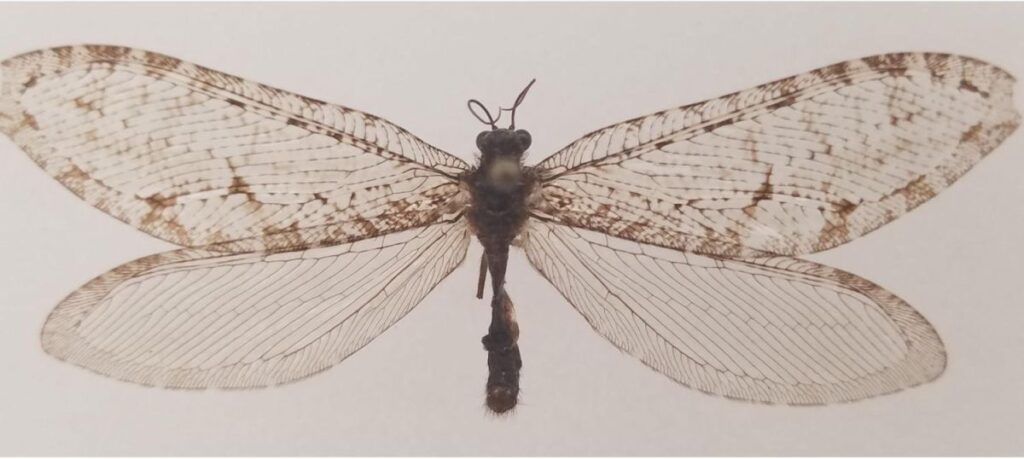
One night in 2012 while he was an entomology grad student at University of Arkansas, Michael Skvarla went to Walmart to buy milk. On his way into the store he saw a large unusual insect clinging to the building so he carefully picked it off the exterior and carried it with him to add to his insect collection.

Back then he misidentified the bug as an “antlion” and forgot about it while he finished his PhD and joined the faculty at Penn State.
Then in 2020 the COVID shutdown forced Penn State classes online so Skvarla pulled specimens from his own insect collection to teach Entomology 432 lab on Zoom. As he showed this bug to the class and described its characteristics Skvarla paused because it didn’t match its label. The class analyzed the bug and made a rare discovery.
“We all realized together that the insect was not what it was labeled and was in fact a super-rare giant lacewing. I still remember the feeling. It was so gratifying to know that the excitement doesn’t dim, the wonder isn’t lost. Here we were making a true discovery in the middle of an online lab course,” said Codey Mathis, a doctoral candidate in entomology at Penn State.
— Penn State Research News: Rare insect found at Arkansas Walmart sets historic record, prompts mystery
This bug is quite rare. According to Penn State Research News, giant lacewings (Polystoechotes punctata) have been missing from eastern North America for over 50 years and were never before found in Arkansas. Its discovery suggests there may be relic populations of this Jurassic-Era insect yet to be discovered.
Where did the giant lacewing come from? Are there more out there? Those answers await more field research.
Meanwhile Skvarla and colleagues performed DNA tests to verify its identity and published in Proceedings of the Entomological Society of Washington.
Read more about the discovery at Penn State Research News: Rare insect found at Arkansas Walmart sets historic record, prompts mystery.
Moral of the Story: Don’t worry if you cautiously misidentify something. Just hang onto that photo or specimen and reevaluate it later. Perhaps you’ll discover a rarity.
(photo credits in the captions; click on the captions to see the originals)
